Explore Bologna, Italy's lively university town with historic charm, renowned cuisine, and vibrant culture in its sprawling Centro Storico.
Read more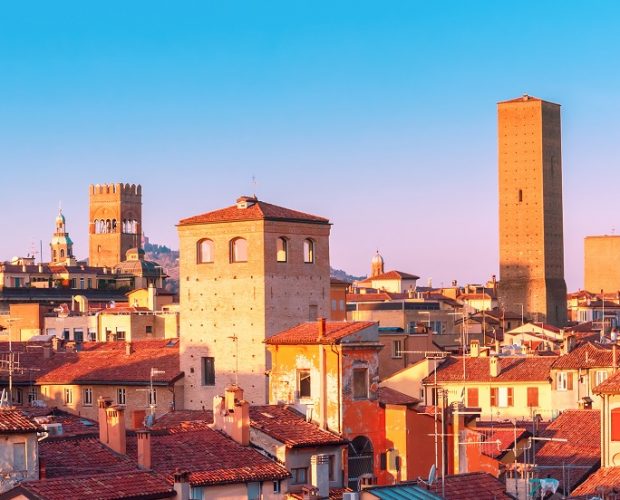
EXPLORE ALL OUR EMILIA-ROMAGNA WINE REGIONS GUIDE
Last updated: May 23, 2024
Colli Piacentini is a misunderstood wine region in Emilia-Romagna. People often characterize it as a workhorse producer of international styles – Cabernet Sauvignon and Chardonnay are two classic examples – that rarely set the world on fire. Both Italians and outsiders pigeonhole these cookie-cutter labels as highly derivative. This is only half true. Growers have planted a sizable volume of French grapes in the hills of Piacentini and use them to make very respectable (if unexciting) varietal and blended wines. Yet, this area also serves as the home of Gutturnio, a unique concoction of Barbera and Croatina (Bonarda) that has been in production since the days of the Romans. Indeed, the name Gutturnio derives from the Latin word Gutturnium, a silver goblet filled to the brim with wine during Roman feasts and celebrations.
History even records that Julius Caesar’s father-in-law – Lucius Calpurnius Piso Caesoninus – built an impressive estate in the area, surrounded by acres of vines. However, his rival Cicero condemned Lucius for excessively enjoying the local tipple, much to the latter’s embarrassment and shame. Back then, wine was inevitably sweet and adulterated with herbs – quite different from the mainstay of production in 2024.
Colli Piacentini DOC offers a wide variety of wine styles, from dry whites to late-harvest sweet wines and traditional method sparkling. The region’s ‘invasion’ of New World varieties has led to an increase in local specialties like Trebbianino Val Trebbia, Malvasia di Candia, and Ortrugo. While the most influential brands may be the easy-to-sell Chardonnays and Pinot Noirs, the region’s vineyards also hide some real esoteric gems waiting to be discovered.
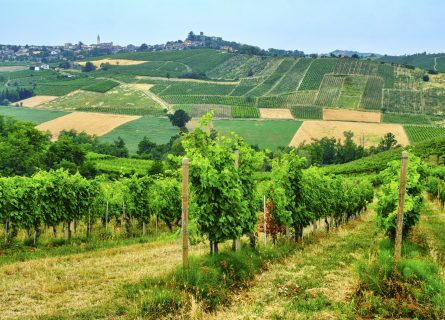
While other regions steamed ahead, Colli Piacentini DOC languished in obscurity until the early 21st century. However, a combination of rising tourism and critical interest in the potential of Emilia-Romagna’s soils and landscape – previously ignored – brought it to prominence. Today, wineries have planted approximately 3600 hectares under vine on the foothills of the northern Apennine Mountains as they chart their course through northeastern Italy to the south of Piacenza. From a distance, the landscape resembles Champagne: gently rolling hills interspersed with vines, trees, and farmhouses.
And, like Champagne, the region offers exceptional terroirs and a patchwork of different mesoclimates – the key benefit of growing grapes in an undulating region. Meanwhile, the local soils consist of a mixture of clay-marls, sand, and sandstone; the former ideally suits the cultivation of Pinot Noir, while Barbera and Croatina perform well on the sandier terrain. As a rule, the area enjoys warm, humid summers and cold winters, with temperatures climbing to 85°F in July and August. Ripeness is seldom an issue in Colli Piacentini, while diurnal temperature variation is vital in maintaining acidity and freshness in the wines.
Diversity of Wine Styles
The broad range of wine styles – and grape varieties – in Colli Piacentini is astonishing. Few other appellations can boast such an eclectic melting pot of dry whites, pungent rosés, succulent reds, gently effervescent sparkling, and unctuous dessert wines. The international red grapes are the Cabernets and Merlots of Bordeaux and Pinot Noir – the latter excels in the hillier parts of Emilia-Romagna. White wine grapes are an attractive mix of regional and imported: Chardonnay and Sauvignon Blanc share vineyard space with Malvasia di Candia and Pignoletto.
However, the most esoteric member of this diverse collection is undoubtedly Ortrugo. Cultivated in the region since Roman times, vintners typically blend Ortrugo with Malvasia to produce fruit-driven sparkling wines in Colli Piacentini, offering an interesting alternative to Prosecco. However, Ortrugo can also yield exceptional still wine that is light, super-fresh, and wonderfully aromatic.
The region has long been split into five key subzones: Monterosso Val d’Arda, Trebbiano Val Trebbia, Val Nure, Viogoleno, and Gutturnio. In 2010, authorities awarded Gutturnio its own DOC in recognition of the superior quality of these inimitable blends of Croatina and Barbera. Monterosso Val d’Arda is another important territory located 20 kilometers south of Piacenza. On these calcareous soils, both still and sparkling wines are made (reds are not permitted), often composed of Malvasia di Candia, Muscat, Trebbiano, and Ortrugo.
Exclusive White Wine Appellations
Trebbiano Val Trebbia is another appellation exclusively dedicated to white wines: still or sparkling cuvées can mix and match Trebbiano, Ortrugo, Sauvignon Blanc, and other permitted grapes, so long as Ortrugo constitutes at least 35 percent of the final blend. Val Nure is also heavily devoted to producing still and fizzy whites, while Viogoleno cultivates the incredibly rare Santa Maria, Bervedino, and Melara grape varieties. They are used to make Vin Santo, Italy’s seminal dessert wine and an obligatory accompaniment to biscotti.
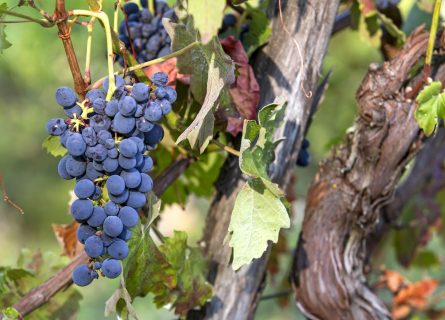
Colli Piacentini’s reputation as a serious wine producer is growing despite its late entry into the pantheon of great Italian vineyards. With a diverse portfolio of styles and wallet-friendly prices, there is much to recommend in this less-renowned part of Emilia-Romagna.
Highlight on Gutturnio DOC
The most worthwhile of this broad selection is undoubtedly Gutturnio – now marketed as a separate DOC. Where else could you find such a delicious – and unusual – blend of Barbera and Croatina, made into both a still and sparkling wine? According to the appellation framework, Barbera must account for a minimum of 55 percent of the blend, with Croatina providing the remaining 45%. Produced in 17 communes south of Piacenza, Gutturnio is a true original; Barbera contributes fruit and richness to the wine, while Croatina brings freshness and perfume to the blend. The net result is a soft, floral red brimming with sour cherry and raspberry fruit. The crème de la crème is the Riserva category, aged 24 months (including six in barrel) before its commercial release.
Emphasis on Pure Expression
Yet many growers eschew oak (especially new oak) for their wines, preferring to let the fruit speak for itself. Fermentation in stainless steel at low temperatures yields the best results – this applies to both the still versions and the esoteric frizzante style. The latter relies on the Charmat method (secondary fermentation in tank) to produce a credible rival to Lambrusco. These juicy, frothy bubblies have been known to win over even avowed critics of red sparkling wines.
Likewise, Monterosso Val d’Arda, Trebbiano Val Trebbia, and Val Nure all have something to offer. In a world dominated by Sauvignon Blanc and Pinot Grigio, these funky blends of Malvasia di Candia, Ortruga, and Trebbiano Romagnolo provide a nice counterpoint to the gooseberry bush hit of Kiwi Sauvignon; they come in both unoaked and (less commonly) oak versions, made into still and sparkling wines.
Thanks to the hard work of committed vignerons, the once marginalized Ortrugo has enjoyed a resurgence in the 21st century, with new plantings outflanking Malvasia and even Chardonnay. Today, it is the star indigenous variety of Colli Piacentini, much appreciated for its naturally high acidity and attractive bouquet of cooking apples, white flowers, and stone fruit.
The Influence of Terroir Over Technique
It provides the essential backbone to the local sparking wines, although Ortrugo has also proven its mettle as a valuable still wine grape. The winemaking, however, is fairly standardized: cool fermentations in steel or concrete yield fruity and approachable wines, occasionally seasoned with new oak. The key differentiation factor in Colli Piacentini is terroir and/or grape variety. Despite what some may claim, that is far more important than what happens in the cellar.
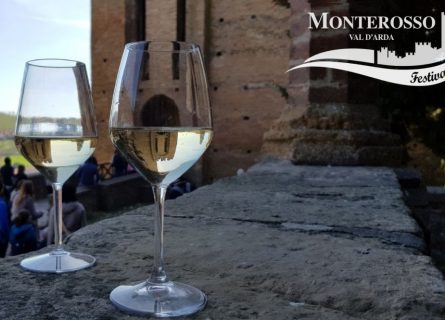
To grasp the incredible profusion of flavors and grapes in northeastern Italy, look no further than Colli Piacentini. It is undoubtedly the most diverse and multifaceted appellation in the vast expanse of Emilia-Romagna – no small feat when considering the province’s geographical size. Gutturnio is still the most exciting of the zone’s unique reds, with its strikingly aromatic and floral red wines, and for wine geeks and sommeliers, it remains the star turn of the region. A string of warm vintages and continued advances in viticulture and winemaking have led to a surge in quality. If you have yet to try it, we urge you to do so!
Exploring Beyond Gutturnio
However, Gutturnio isn’t the only left-field offering in Colli Piacentini. For example, look to the frizzante and fully sparkling wines of the region’s subzones, especially Monterosso Val d’Arda. In these undulating vineyards, there are some surprisingly good alternatives to Prosecco and, indeed, Franciacorta: fruit-driven and crisp sparklers that can hold their own in blind tastings and competitions.
There is also a rich selection of very refreshing dry whites from this area, with outstanding regional blends coming out of Trebbiano Val Trebbia and Val Nure. Some exciting new Pinots and Chardonnays are coming from the higher-altitude sites in Colli Piacentini.
Another major story currently unfolding is the move toward organic and sustainable viticulture in the DOC, with biodynamic farming yielding very terroir-driven, precise wines. Be prepared to look beyond the globalized styles; this up-and-coming appellation will amaze you. Colli Piacentini, riding a wave of investment and tourism, could be the next big thing in Emilia-Romagan viticulture.
Chardonnay is a green-skinned grape varietal native to the Burgundy wine region in France and one of the most popular varieties worldwide.
Find out moreDiscover Lambrusco: Italy's Sparkling Red Gem for Emilia Romagna's Delightful Cuisine. Explore its rich history and perfect pairings.
Find out moreExplore Pinot Bianco: Shaping Excellence in Franciacorta & Alto Adige Wines. Versatile and Unique Grape, Unveil Its Secrets!"
Find out moreDiscover Pinot Grigio's Transformation: From Ordinary to Exceptional in Italian White Wine. Explore the Revolution!
Find out moreThe sauvignon blanc grape varietal, originally from the Bordeaux region of France, is now one of the world's most loved white varieties.
Find out moreDiscover Piedmont and Nebbiolo: A Noble Marriage of Grape and Terroir. Explore the essence of Nebbiolo in the Langhe hills of northern Italy.
Find out moreCroatina: Italy's hidden gem in red wine. Explore its unique characteristics and the challenge of crafting single-varietal expressions.
Find out moreDiscover the irresistible allure of Cabernet Sauvignon—a worldwide favorite with robust, dark-bodied flavor. Unleash your wine journey today!
Find out morePinot noir is a light-bodied red wine varietal closely related to the Vitis vinifera grape and produces the most sought-after red wines in the world.
Find out more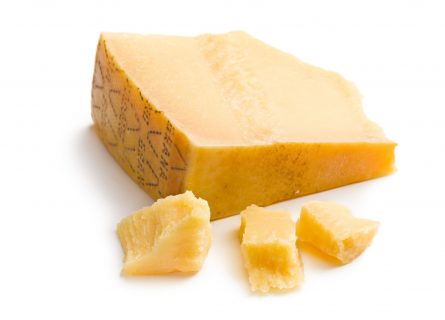
Although Piacenza lacks the gastronomic renown of Bologna, this underrated small city has more than its fair share of charming osterie hidden among the narrow alleyways of its medieval center. Be it vegetarian (ravioli stuffed with ricotta, sage, and pine nuts) or carnivorous (pappardelle with the classic Ragù Bolognese), you’re bound to find something delectable in the back streets of Piacenza.
A Guide to the Gastronomy of Emilia Romagna: Read more

Explore Bologna, Italy's lively university town with historic charm, renowned cuisine, and vibrant culture in its sprawling Centro Storico.
Read more
Explore Modena's Culinary Delights and Automotive Heritage. Discover the World's Best Balsamic Vinegar and Ferrari's Birthplace.
Read more
Discover Parma, the culinary heart of Italy, where Prosciutto and Parmigiano Reggiano reign supreme. Explore its rich history and artistic heritage.
Read more
Discover Pienza's Renaissance Charm and Rich History in the Heart of Tuscany's Val d'Orcia. Explore Etruscan Roots, Renaissance Architecture, and Timeless Beauty.
Read moreIf you would like us to customize an exclusive luxury tour, contact us and let us know your travel plans. We offer luxury food and wine tours for private groups of a minimum two guests. In addition, all of our private, chauffeured tours are available year-round upon request.

